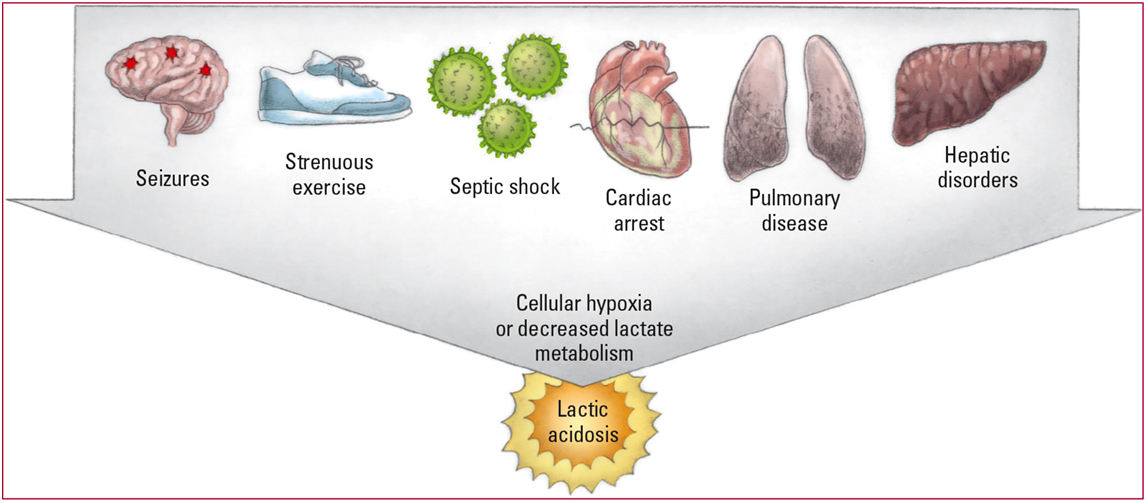Lactate, produced as a result of carbohydrate metabolism, is metabolized by the liver. The normal lactate level is 0.93 to 1.65 mEq/L. With tissue hypoxia, however, cells are forced to switch to anaerobic metabolism, and more lactate is produced. When lactate accumulates in the body faster than it can be metabolized, lactic acidosis occurs. This reaction can happen any time the demand for oxygen in the body is greater than its availability.
The causes of lactic acidosis include septic shock, cardiac arrest, pulmonary disease, seizures, and strenuous exercise.
The latter two cause transient lactic acidosis. Hepatic disorders can also cause lactic acidosis because the liver can't metabolize lactate.
Treatment
Treatment focuses on eliminating the underlying cause. If pH is below 7.1, sodium bicarbonate or another alkalinizing agent such as tromethamine may be given. Use caution when administering such agents because alkalosis may result.
